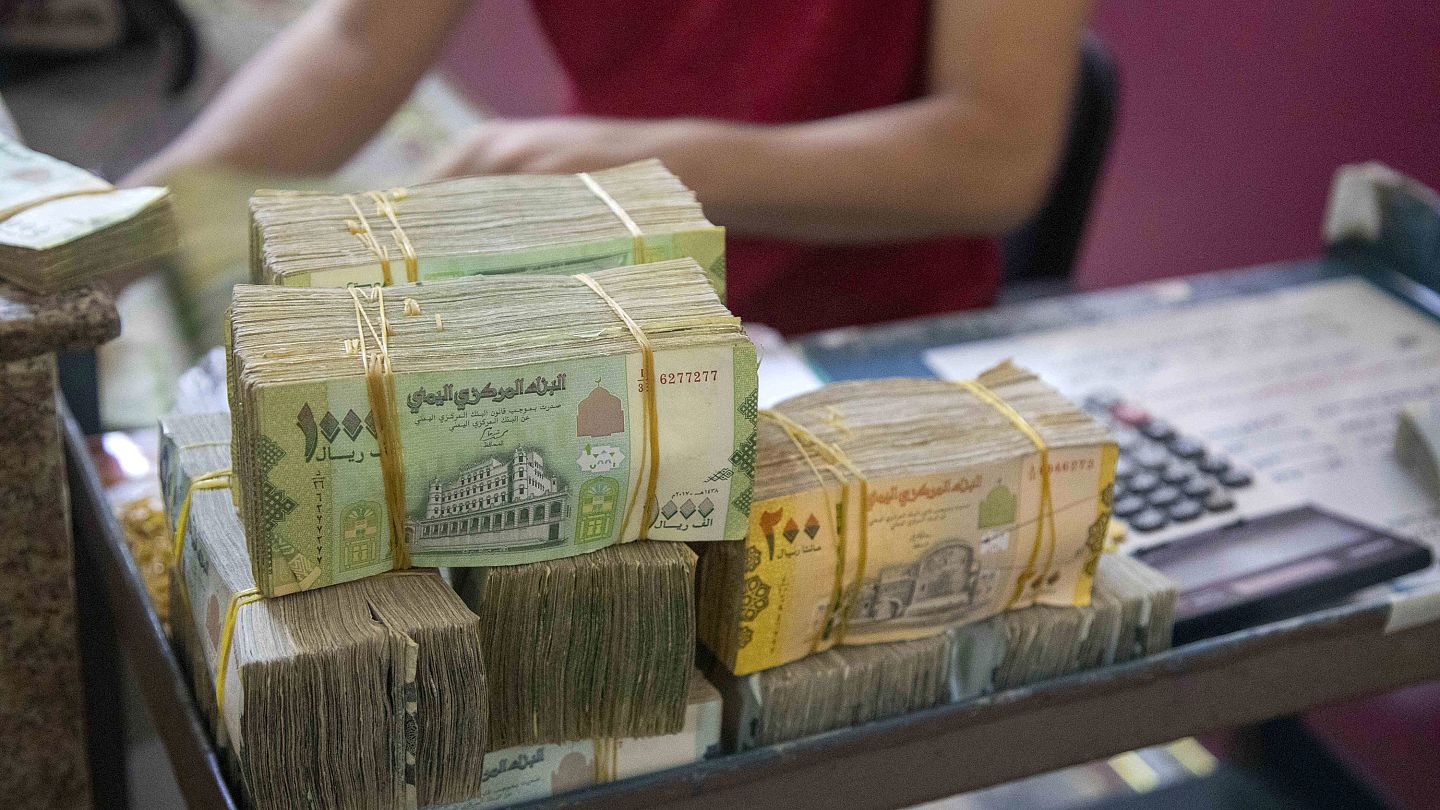
AHMAD AL-BASHA/AFP
03-08-2025 at 8 PM Aden Time

|
|
Aden (South24 Center)
On Saturday, (August 2, 2025), the Yemeni rial recorded a significant surge in value against foreign currencies in Aden, with the US dollar trading at approximately 1,528 rials for buying and 1,680 for selling — a sharp improvement from its peak of over 2,800 rials just days earlier. The exchange rate for the Saudi riyal also declined to around 400 rials for buying and 450 for selling. This marks the best performance of the local currency in over a year, triggering hope among the people amid the widespread protests in Hadramout over the deterioration in services, particularly in the electricity sector.
The sudden recovery comes in the aftermath of a series of urgent government measures, including the closure of dozens of unlicensed exchange companies, new mechanisms to regulate import financing, and plans by the Central Bank in Aden to activate a digital payment system with international support. These developments coincide with reports that Aden’s oil refinery operations may partially resume soon, adding momentum to the financial turnaround.
However, experts expressed skepticism over the sustainability of this rapid improvement in currency. Dr. Mohammed Jamal Al-Shoaibi, a professor of finance and political economy at the University of Aden, told ‘South24’ that the rial’s recovery did not appear to stem from genuine economic interventions, such as increased exports or the arrival of foreign deposits. “This is likely a politically-driven reaction — similar to the forces behind the previous collapse,” he said.
Al-Shoaibi argued that the recent currency collapse was artificially induced, and that the current improvement lacks solid economic foundations. He pointed to fuel prices as a real-time indicator, noting that the price of 20 liters of fuel only dropped from 37,800 to 31,000 rials — an 18% decrease — despite the rial appreciating by nearly a third. “If the recovery were real, we would expect fuel prices to fall to around 25,000 rials,” he explained. “This suggests the market hasn't fully responded to the change in exchange rate and casts doubt on the sustainability of this rebound.”
Echoing this sentiment, Hussein Al-Ba’si, head of the Southern Money Exchangers’ Union, said the recent plunge in foreign exchange rates was not based on any real economic shift. He suggested the drop might have been orchestrated by large firms prepared in advance to capitalize on the downturn. “The Central Bank lacks sufficient reserves in foreign currency or gold — even local currency is scarce. So how can it inject liquidity?” he said.
Al-Ba’si added that no Gulf financial support has been extended in recent months, reinforcing his view that the currency improvement is “illusory”. He warned that many citizens and traders may lose their savings if the rates return to previous levels — or even higher — in the coming weeks.
From a broader perspective, Mustafa Nasr, head of the Economic Media and Studies Center, described the volatility as abnormal and reflective of a fragile monetary system. He told ‘South24’ that “speculation and chaos in the exchange market played a central role in deepening the crisis,” though he acknowledged that recent moves by the Central Bank — including activating the purchasing committee and stricter oversight — had a positive short-term impact.
Nasr cautioned that these measures must be sustained and complemented by political backing. “The legitimate government must pursue bold reforms to stabilize the currency,” he said, pointing to the halt in oil exports and poor fiscal policies as core issues. “Supporting the Central Bank is not enough without political will and financial sustainability.”
Meanwhile, the Ministry of Industry and Trade launched field campaigns to monitor commodity prices and penalize violators. Prime Minister Salim bin Buraik visited the ministry in Aden on Saturday, emphasizing that the currency recovery must translate into real price reductions. “The battle is economic and existential,” he declared, warning that exploitative traders will be held accountable.
In a related statement, the Hail Saeed Anam Group — Yemen’s largest trading conglomerate — said it is “closely monitoring exchange rate developments” and is preparing to revise product prices “in a way that benefits consumers.” However, the company stopped short of announcing any immediate price cuts, instead linking future adjustments to lasting currency stability and availability of import financing — a position critics say is unjustified given the sharp drop-in exchange rates.
As expectations mount, all eyes are now on both the government and major suppliers to convert the monetary improvement into tangible relief for citizens. The coming days will reveal whether this is a real turning point or another fleeting phase in Yemen’s prolonged economic crisis.
Previous article
Next article